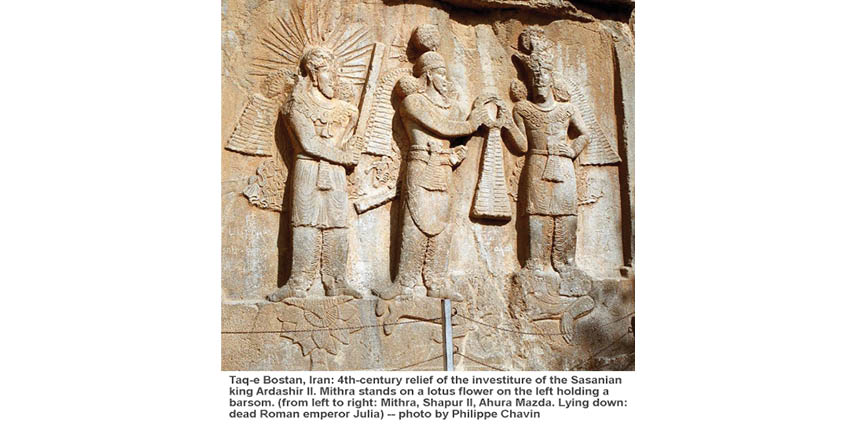A newly discovered rock-carving (petroglyph) in West Iran could have a link to ‘Mithraism’, a prehistorical religion inspired by the Iranian worship of Zoroastrian god, Mithra. While some Iranian archaeologists suggest the carving was created by a Mithra follower as it depicts the portrayal of a human with his right hand raised and an object in his hand, experts say dating the petroglyph requires more research for a definitive conclusion.
The petroglyph was found upstream of a spring, inside a niche measuring about two meters by two meters, carved some 50 centimeters deep into the mountainside, located in Western Kermanshah province on a mountainside near archaeological complex, Taq-e Bostan, which consists numerous properties from prehistoric to historical periods such as imposing Sassanid-era bas-reliefs, Morad-Hassel Tepe, an ancient village, a Parthian graveyard and a Sassanid hunting ground. Taq-e Bostan is known for its bas-reliefs of Sasanid origin (3rd to 7th century CE). The carvings, some of the finest and best-preserved examples of Persian sculpture under the Sasanians, include representations of the investitures of Ardashir II (reigned 379-383 CE) and of Shapur III (383-388), the latter in a man-made cave, carved in the form of an iwan (three-sided, barrel-vaulted hall, open at one end).
Mithraism was the worship of Mithra – Iranian God of sun, justice, contract, and war in pre-Zoroastrian Iran. Known as Mithras in the Roman Empire during the 2nd and 3rd centuries CE, this deity, according to Britannica Encyclopedia, was honored as the patron of loyalty to the emperor. After the acceptance of Christianity by the emperor Constantine in the early 4th century, Mithraism rapidly declined.
.
(Courtesy: Tehran Times)
- દિકરી એટલે બીજી માં… - 20 April2024
- નાગપુરની બાઈ હીરાબાઈ એમ. મુલાનદરેમહેરનો ઇતિહાસ - 20 April2024
- વિશ્વ ભારતી સંસ્થાન દ્વારા રતિ વાડિયાનુંસન્માન કરવામાં આવ્યું - 20 April2024
